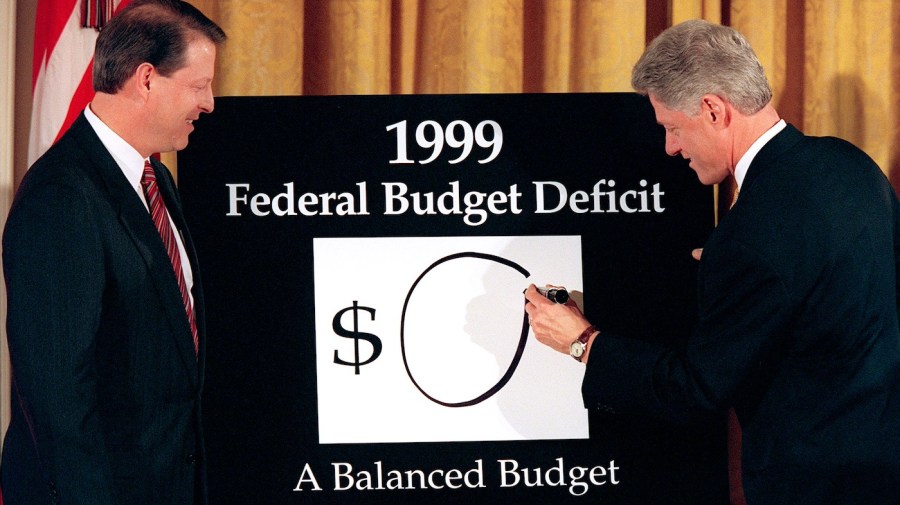
Washington’s addiction to deficit spending — a rare bipartisan habit — is unlikely to change, no matter the electoral outcome in November. A deep conviction exists on both sides of the political divide that fiscal consolidation, whether achieved through less spending or higher taxes, reduces growth.
What this political consensus misses, however, are situations in which the classic trade-off is suspended — when smaller deficits can counterintuitively deliver more growth. Today’s macroeconomic environment is ripe for such an approach.
Compared to the years before the pandemic, fiscal policy — government spending and taxation — has kept a foot on the gas. Deficits remain large, particularly given the economy’s health. At the same time, monetary policy via the Federal Reserve has kept a foot on the brake to slow the economy and rein in price growth.
It’s a wasteful combination of economic policymaking: Growth bought expensively with higher deficit spending is being offset by tighter monetary policy looking to reduce that same growth. A less costly (and less risky) way to slow things down would be to ease off the accelerator.
Skeptics of “anti-debt stimulus” should look to the early 1990s, the last time politicians took advantage of this playbook. At the time, interest rates were still high, and advisors to President Bill Clinton argued that a credible budget could drive down interest rates by compressing the risk premium baked into yields. They were right: As deficits declined through the 1990s, so did interest rates, reducing borrowing costs and spurring private sector growth (and federal tax receipts). Notably, the late 1990s saw the country’s last budget surplus.
Too often over the last two decades, fiscal and monetary policymakers have been out of sync. The 2010s were the mirror image of today’s situation: Fiscal policy was hindering growth with various “fiscal cliffs,” while monetary policy was doing everything it could to stimulate a sluggish recovery.
Today, long-term bond risk premiums are close to zero, which makes a direct repeat of the 1990s playbook implausible. But the wasteful combination of high deficits and high-interest rates offers a similar opportunity for stimulative fiscal consolidation.
In the current environment, the growth impact of fiscal consolidation could be very small or even positive. With an orderly, sustained retreat in fiscal deficits, monetary policy would be enabled to ease accordingly. Once we factor in the second-order effects from lower interest rates — such as reduced mortgage costs driving more housing activity — it’s easy to see that deficit reduction merits more political attention.
Of course, budgetary choices will never be outsourced to economic managers the way interest rates are to central bankers — nor should they be. And fiscal consolidation, whether through spending cuts or tax increases, requires tough political decisions that will create winners and losers. But deal-making challenges aside, there is now a compelling macroeconomic argument that wasn’t there before.
Traditional arguments for fiscal consolidation — lowering the risk of debt crises and spurring somewhat faster growth over the long run — are valid but politically uncompelling. Foregoing spending or raising taxes today to set up future administrations for success will remain a difficult selling point. But if the first job of politicians is to win reelection, then the current opportunities for fiscal consolidation should not be overlooked.
Those who can see out farther than a few quarters may reap the benefits of letting smaller deficits reduce monetary policy’s restraint. They may also find that macroeconomic tailwinds can translate into political gains — Bill Clinton was reelected in 1996 with 379 electoral votes.
Philipp Carlsson-Szlezak is global chief economist and Paul Swartz is senior economist at Boston Consulting Group. They are authors of “Shocks, Crises, and False Alarms: How to Assess True Macroeconomic Risk.”













